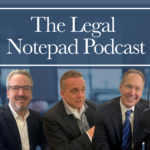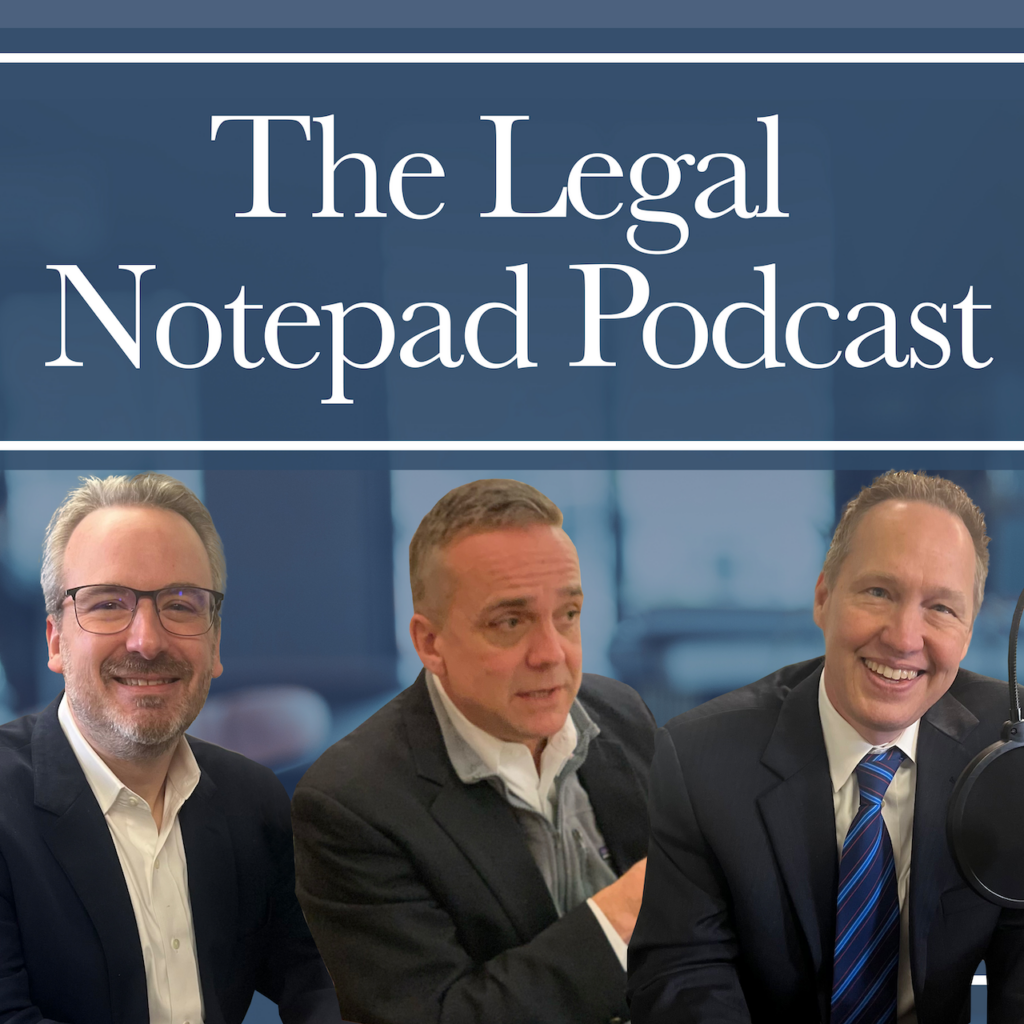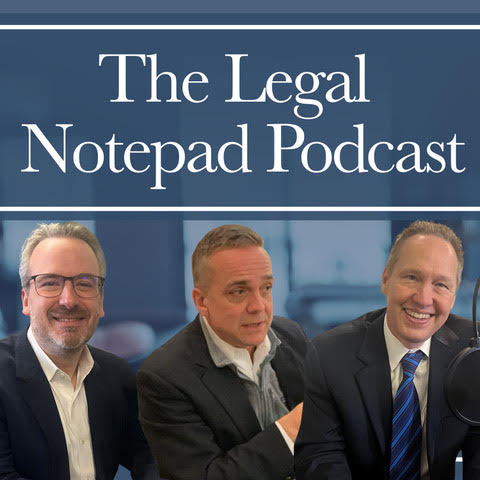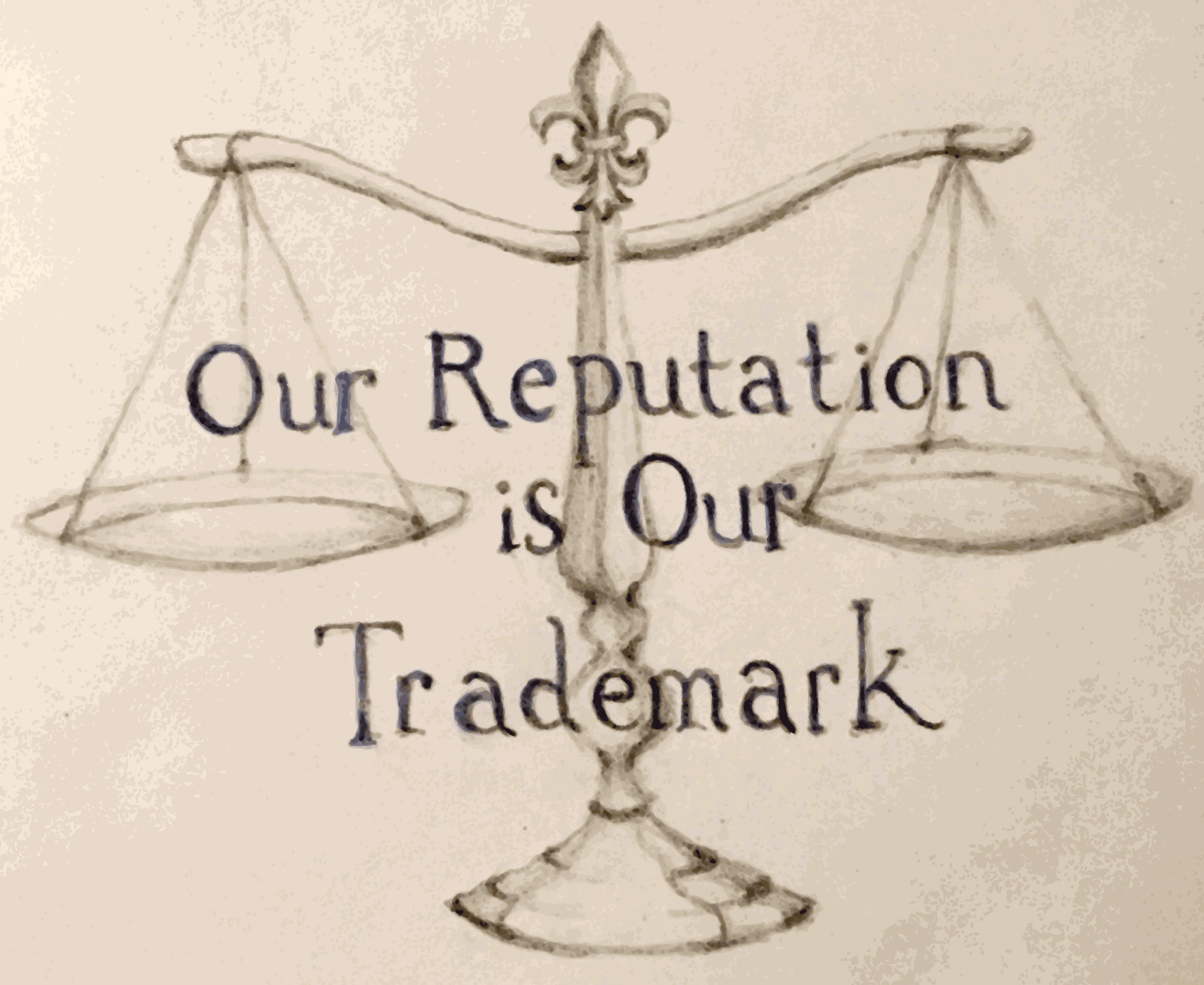Episode 8: Louisville attorneys Rob Mattingly and Kevin C. Burke discuss whether police reports are admissible. It’s a concern client often bring up during initial conversations with their attorneys.
Editor’s Note: If you are an attorney and would like CLE credit for this episode, visit the Kentucky Justice Association website, click the Education and Training tab and look for the podcast.

Lauren begins by commenting on the number of responses to the recent poll asking about topics and other subject matter the audience would like to Rob and Kevin to address in upcoming episodes. The feedback was terrific.
As we dive into the topic, Kevin brings up a favorite answer given by many attorneys, “Well, it depends.” The general rule is that, in Kentucky courts, police reports are inadmissible as hearsay.
Kentucky Rule of Evidence 803 contains the basis for what is not excluded by the hearsay rule. In sub-section 6 it lists records of regularly conducted activity (e.g. the business records exception). Sub-section 8 deals with public records and reports (e.g. the public records exception). Specifically, 8(A) focuses on investigative reports by police and other law enforcement personnel. This establishes police reports are not an exception to the hearsay rule.
Manning v. Commonwealth
Kevin summaries this Kentucky Supreme Court case, from the year 2000, which directly cites to KRE 803(6). In Manning vs. Commonwealth, the defendant in the murder case wanted to introduce the police report. The report identified someone other than the defendant as the possible perpetrator, based on the statements of an unidentified witness. The trial court ruled the police report was inadmissible as hearsay. The Supreme Court affirmed the decision. It was properly excluded under KRE 803(6). The Court also cites the Kentucky Evidence Law Handbook.
Rob comments about the double hearsay issue because the report itself is hearsay, about someone else who’s making hearsay comments.
The Supreme Court also cited Prater vs. Cabinet for Human Resources, dealing also with KRE 803(6).
The opinion did note that the defense was able to ask the officer about the conversation with the unidentified witness, during cross-examination. That testimony was admissible, even though the actual police report was not.
Rob notes that they didn’t have to consider the admissibility under KRE 803(8)(A), because it was obvious. However, the question was whether KRE 803(6) applied.
Gorman v. Hunt
This is a civil case. Gorman v. Hunt is another Kentucky Supreme Court decision from 2000. It’s often referred to as the “posed photograph case.” This was an automobile verses pedestrian case. The issue was whether posed photographs could be admitted and shown to the jury.
Rob clarifies the case serves as an example of whether someone can recreate the area and taking photographs of the area. They’ve posed the scene.
This case refers to an Advanced Life Support (ALS) Report, which would have been prepared by EMS personnel. In the opinion, it’s not referred to as a police report, but it’s functionally the same thing.
The plaintiff wanted to use the ALS run report to show the defendant driver was exceeding 50 mph, at the time of the collision. The speed was based on testimony from unidentified bystanders. At trial, the court ruled the ALS run report was inadmissible. The court of appeals affirmed the verdict. The Supreme Court took it up on discretionary review. The Court ruled that the trial court had ruled properly with regard to the ALS run report.
Campbell v. Marcum
This 1968 automobile accident case addressed the admissibility of police reports and the information contained therein. This collision involved two vehicles. A Kentucky State Trooper completed the police report. The question was whether the trooper could read from his report, while on the stand.
The defendant wanted this testimony from the trooper. However, the trial court refused to allow a reading from the police report. This issue was appealed. The appeals court affirmed the trial court’s ruling that prohibited the trooper from reading the report aloud.
Kevin comments that no authority was cited regarding the admissibility of the report. Instead, a general treatise (not a Kentucky treatise) was used. It did not directly address hearsay.
Admissions by Parties and Prior Inconsistent Statements
Rob and Kevin will discuss two cases dealing with this topic. Again, clients often have questions about police reports, how they are going to be used and how to get statements either clarified or corrected.
Day v. Commonwealth (2007)
This is a criminal case involving a DUI conviction. Tammy Day was given a 7-day sentence with work release. During this time, her daughter was in a car wreck. Tammy petitioned for time to tend to her daughter. The district court allowed it. She returns to serve the remainder of her sentence. During this period, she leaves for work and then returns to jail for the night. She showed up with a bag of personal items. Upon inspection, the sheriffs find drugs hidden in a bra, inside the bag. Tammy denies knowledge of the drugs.
During this time, an officer is taking notes. During the investigation, the officer records that Tammy claims to have purchased the bra at the Salvation Army. The handwritten notes by the officer were placed in the file, although they were not part of an official police report.
At trial, Tammy denies ownership of the bra. This is different from her original statement that she had purchased the item at the Salvation Army.
The officer’s contemporary note was brought in at trial. While it wasn’t an actual police report, it was similar to one. This issue is should that note have been admissible?
Tammy Day is convicted and sentence to approximately 4 years, even though her original DUI conviction only resulted in 7 days.
The case is appealed based on the question of whether the note should have been admitted into evidence.
This court of appeals held that under Manning v. Commonwealth it’s distinguishable. In Manning, there was a statement from an unidentified witness. However, in this case, the statement about the bra was directly attributable to Tammy Day. The statement was considered to be an admission by a party under KRE 801(A)(b)(1). Therefore, it was appropriate that the jury hear the information.
Rob notes that if there’s a statement that can be considered an admission by a party, and it’s relevant to the elements of the case, it might come in as evidence.
T.L v. T.M.
Rob and Kevin will use this 2008 child custody case to illustrate how an inconsistent statement on a police report could impact admissibility. The biological father petitioned for custody away from the biological mother (who was living with her boyfriend). The father alleged domestic violence was occurring in their household.
At trial, the mother denied she was being or had been abused by the boyfriend. However, the father wanted a police report (from several years prior) to be admitted, because it stemmed from a call the mother made to the police alleging the boyfriend had attacked her. This refuted the mother’s claim that no abuse had ever happened. This calls into question whether the police report is admissible.
The father’s attorney argued the police report highlights a prior inconsistent statement, under KRE 801(A)(a)(1).
Kevin notes that this was bench trial, not a jury trial, but the rules of evidence still apply. The court ruled in favor of the father because the statement was inconsistent at trial. Thus, the police report was admitted.
Interestingly, Kevin points out that the police report occurred in New Jersey, and was not actually a part of the case before the court. Nonetheless, the prior inconsistent statement is in control.
Rob comments that had the mother admitted, at trial, there had been an issue of domestic violence while they were in New Jersey, the police report would not have been admitted.
Diagrams
Lauren introduces this segment with a question of whether a police diagram can be admitted. Rob recognizes this happens fairly often at trial. The police have the capability of generating a CAD diagram and attaching it to the police report. In this particular discussion, Rob and Kevin focus on the admissibility of the diagram, rather than that entire police report.
Davis’ Adm’x v. Gordon
This was a 1948 court of appeals ruling. This was a car verses pedestrian case, in which the child pedestrian died. A wrongful death claim was filed. The defendant claimed the child ran out from between parked cars along the side of the road. There was nothing he could do to avoid the impact. The plaintiff claimed there were no cars parked along the side of the road where the child was struck. Therefore, the defendant should have had a clear line of sight.
The police at the investigation drew a diagram showing 3 cars parked along the road. The marked where the child ran out, into the road, from between 2 of the cars. The diagram was admitted at trial. The court ruled in favor of the defendant. The plaintiff appealed.
Kevin notes the diagram was based both on what the officers observed when they arrived on scene and by information provided from bystanders. These are hearsay statements.
The court of appeals ruled that because the diagram was tainted by the hearsay information, it should not have been admitted. As a result, the case was reversed.
Kevin refers back to the 2000 case of Gorman v. Hunt, mentioned earlier in this episode, which involved posed photographs. In this case, the court ruled the posed photographs were admissible.
Kevin advises that even though a visual may be inadmissible, if you can find another way, you still might be able to get it admitted.
Additional Helpful Cases Dealing with Police Reports
Rob begins with Prater v. Cabinet for Human Resources (954 S.W.2d 954). This is a 1997 Kentucky Supreme Court case. The Cabinet had a case report in a parental termination case. The case report was not admissible because it contained statement by different witnesses. One party argued it should be admitted as a business record. However, the court held it was inadmissible because it contained the statement from witnesses, which is hearsay.
Hacker v. Commonwealth
This is a Kentucky Supreme Court case from 2014. It was a criminal case. There was a police report from a prior conviction. The prosecution used the police report to attack the defendant’s credibility. The Court ruled the report was inadmissible because it contained victim’s statements. While it appears to be a business record, the statements are hearsay.
HBR Madisonville v. Attebury
This is a Kentucky court of appeals opinion from 2021. There was an internal investigation resulting in a wrongful termination at a nursing home. The terminated employee wanted the report from the investigation to be kept out. The employer wanted to admit the report. The court ruled the report was not admissible because it contained statements from other employees. It’s a business record, but it contained statements be people, even though they can be identified.
Allen v. Gueltzow
This is a 2017 DVO case. Even in a DVO hearing, police reports are not admissible.
JDY v. BHD
This is a 2008 court of appeals case involving a DVO. In this case, they wanted to admit the actual petition from the plaintiff, not the police report. The petition was ruled inadmissible, just like a police report.
Bradley v. Commonwealth
Rob notes that sometimes the rules of evidence, themselves, don’t apply. Bradley v. Commonwealth is a 2021 court of appeals case. In a restitution hearing, the court ruled a police report was admissible. Under KRE 1101(D)(5), the court said the rules of evidence do not apply to restitution hearings.
Kevin adds that in sentencing, probation revocation, grand jury proceedings, preliminary hearings and others, the rules of evidence don’t apply, except for privileges. Again, refer to KRE 1101(D).
That’s a wrap on today’s discussion. We hope you found the discussion insightful. As always, we encourage you to share this episode with your colleagues.
If you’d like the case notes, please sent us an email request and we’ll be happy to email you the file including the cases, rules, etc.
You can follow our podcast on a variety of platforms including, Spotify, iHeartRadio, Amazon Music, Audible, Apple Podcasts and many more. Thanks for taking the time to listen.
For more information about the Law Offices of DeCamillis and Mattingly, PLLC
Address: 138 S. Third Street, Louisville, KY 40202 (across from The Old Spaghetti Factory)
Phone: (502) 589-2822
Website: DeCamillisMattingly.com
To Contact Kevin Burke:
Website: BurkeNeal.com
Phone: (502) 709-9975
The Kentucky Bar Association Requires Us to State “This is an advertisement.”



